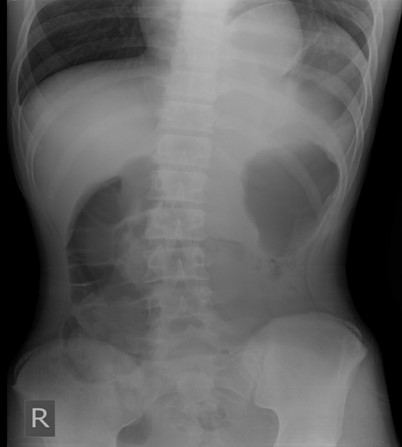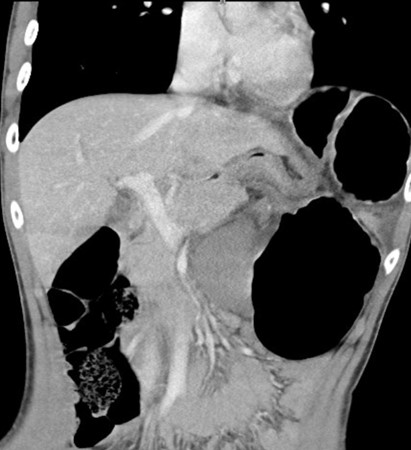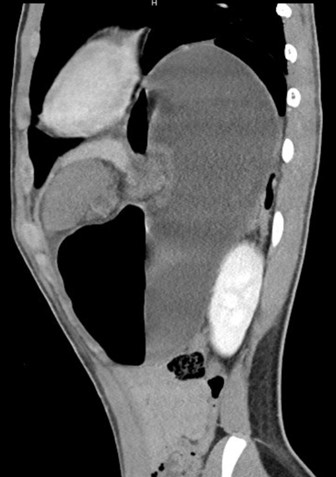Answer of December 2022
For completion of the online quiz, please visit the HKAM iCMECPD website: http://www.icmecpd.hk/
Clinical History:
A 15-year-old boy with no significant past medical history presented to the emergency department with an acute onset of severe epigastric pain and repeated vomiting of undigested food for 2 days. Physical examination revealed epigastric fullness and tenderness.
Abdominal radiograph
CT Abdomen with contrast – coronal
CT Abdomen with contrast – coronal
CT Abdomen with contrast – Sagittal
DIAGNOSIS
Congenital diaphragmatic hernia, mesentero-axial gastric volvulus and wandering spleen with torsion/ischaemia
IMAGING FINDINGS
Abdominal radiograph: There is a markedly distended stomach bubble which is intrathoracic in location. Absence of splenic shadow in the left upper quadrant is noted. An abnormal space-occupying soft tissue mass in central abdomen is noted adjacent to the liver shadow.
Contrast enhanced CT Abdomen: Intrathoracic herniation of the stomach via a large posterolateral defect of the left hemidiaphragm is confirmed. The stomach is markedly dilated with abnormal displacement of antrum above the gastro-oesophageal junction and pylorus is found superior to the fundus. Features are compatible with mesentero-axial gastric volvulus. Absence of spleen in the left upper quadrant is noted. Poorly enhancing, comma-shaped abdominal mass is found in the center of abdomen, compatible with wandering spleen with splenic torsion and ischaemia.
DISCUSSION
Wandering spleen and gastric volvulus are two rare entities that have been described in association with congenital diaphragmatic hernia. Any delay in diagnosis can lead to ischemia and necrosis of both organs, resulting in high mortality and morbidity. The abnormal development of intraperitoneal suspensory ligaments is a recognized common cause of these conditions. The excessive mobility and abnormal position of both stomach and spleen predispose to torsion of these organs.
Gastric volvulus may be organo-axial or mesentero-axial, occurring around an axis made by two fixed points. When untreated, strangulation occurs, which results in ischaemia, necrosis, and eventually gastric perforation. The typical presentation of acute gastric volvulus named ‘Borchardt triad’ is described. This triad includes severe epigastric pain with distention, vomiting followed by violent, nonproductive retching, and inability to pass a nasogastric tube into the stomach.
Wandering spleen is a mobile spleen that is attached by an elongated vascular pedicle, allowing it to migrate to any part of the abdomen. It is a rare congenital malformation resulting from abnormal development of the splenic peritoneal attachments. Most cases in children occur when the child is younger than 1 year; the male-to-female ratio is 6:1. The splenic pedicle has an increased risk of torsion which leads to splenic congestion and eventually infarction.
Both splenic torsion and gastric volvulus are potentially life-threatening if not immediately managed surgically. Gastropexy, splenopexy, hernia reduction, and diaphragmatic hernia repair are the definitive surgical options.



